Literary journals
Literary journals (літературні журнали; literaturni zhurnaly). Periodical publications, usually appearing monthly, devoted to the publication of literary works and literary criticism. Initially the scope of such periodical publications was broader: they included, in addition to literary works, articles on social, political, and civic themes. The first such general literary magazines to appear in Ukraine were Khar’kovskii Demokrit (1816), Ukrainskii vestnik (Kharkiv) (1816–19), and Ukrainskii zhurnal (1824–5). Much more than just a literary journal, Osnova (Saint Petersburg) (1861–2) played an important social and organizational role by providing a forum for the fledgling Ukrainian vernacular literature.
In Ukraine under Austro-Hungarian rule periodical literature began with journals, such as Pchola (1849), Vechernytsi (Lviv) (1862–3), the monthly Meta (1863–6), the weekly Rusalka (1862–6), and the journal Pravda (1867–96). The 1870s and 1880s saw the appearance of literary journals with a more radical perspective, such as Druh (1874–7), Hromads’kyi druh (1878–9), and the monthly S’vit (1881–2). Zoria (Lviv) (1880–97) became a general journal representative of Ukrainian literature in the 1890s. Unlike Zoria, which had a conservative orientation, Narod (1890–5) and Zhytie i slovo (1894–7) were started by writers and scholars with radical and socialist ideas. In 1898 Mykhailo Hrushevsky established Literaturno-naukovyi vistnyk, a single literary-scientific journal uniting all Ukrainian literary trends and the most prominent critics and scholars from all Ukrainian territories. The journal played a leading role in Ukrainian literary development until 1919. Since publication in Ukrainian was forbidden by the Ems Ukase, the scholarly literary journal Kievskaia starina (1882–1906) was published in Kyiv in Russian. In 1907 it was renamed Ukraïna (1907), and four issues appeared in Ukrainian. The first literary journal after the liberalization of 1905 was the monthly Nova hromada (1906), but its importance diminished with the transfer of Literaturno-naukovyi vistnyk to Kyiv in 1907. Nevertheless, with the emergence of new literary trends, another literary journal was established in Kyiv, Ukraïns’ka khata (1909–14), which became the forum for Ukrainian ‘modernism.’ It opposed the traditional Ukrainophilism and conservative populism.
In Lviv the new literary and art magazines founded by followers of modernist trends included the monthly Ruska khata (1905–6), the short-lived magazine S’vit (1906–7), Bdzhola (1908), and Buduchnist’ (1909–10). Emphasizing art and literature was the semimonthly magazine Iliustrovana Ukraïna (1912–13).
The cultural and national renaissance after the dissolution of the Russian and Austro-Hungarian empires was also marked by an increase of literary journals. Literature, literary criticism, popular science, and art were represented by Nashe mynule (1918–19), the journal Mystetstvo (1919–20), and Knyhar (1917–20), which also included a section on bibliography. In addition to the revived Literaturno-naukovyi vistnyk in Kyiv, there were the Universal’nyi zhurnal (1928–9) in Kharkiv and the monthly Shliakh, which appeared in Moscow in 1917 and was transferred to Kyiv in 1918, where it continued in the tradition of Ukraïns’ka khata until 1919. The symbolists were represented by the almanac Muzahet (1919), and the futurists published Semafor u maibutnie (1922), Katafalk mystetstva (1922), Gong komunkul’ta (1924), and the monthly Nova generatsiia (1927–30). The leftist writers close to the futurists were organized in the group Avanhard (Avant-garde), and published a bulletin, Biuleten’ Avanhardu (1928–9, three issues). The all-Ukrainian peasant writers' union, Pluh, published its journal Pluh (1925–33).
The monthly Zhyttia i revoliutsiia was published in Kyiv between 1925 and 1934. It recruited contributors from many groups, including MARS and the Neoclassicists. It also devoted some space to the cultivation of Ukrainian traditions and cultural ties with the West. An important literary function was performed by Kul’tura i pobut, a literary supplement to Visti VUTsVK. Mykola Khvylovy’s group published the bimonthly Vaplite beginning in 1926; it was forced to close in 1927. Khvylovy tried to continue the tradition of an engaging literary journal in the monthly Literaturnyi iarmarok (1928–30, 12 issues) and, when that too failed, in Prolitfront (1930).
The most prestigious forum of literature, art, literary criticism, and political opinion was the Kharkiv monthly Chervonyi shliakh (1923–36), which replaced Shliakhy mystetstva (1921–3) and united writers of all persuasions. Some other literary journals published in Kharkiv were the semimonthly Selians’kyi zhurnal (1929–31); the literary monthly for agricultural workers, Traktor; and the semimonthly of the All-Ukrainian Association of Proletarian Writers, Literaturnyi pryzov (1931–2). That association also published the most important Russian-language literary journal, Krasnoe slovo (1927–32), which became Litstroi in 1933 and Sovetskaia literatura in 1934.
In addition to Zhyttia i revoliutsiia, Molodniak (1927–37), the journal of the Central Committee of the Communist Youth League of Ukraine, and the literary art journal Nova hromada (1923–9) were published in Kyiv. As a supplement to the Odesa newspaper Chornomors’ka komuna, there was the literary journal Shkval (1924–33) and the literary, art, and critical publication Metalevi dni (1930–3). The latter two periodicals merged in Literaturnyi zhovten’ (1934–5). Literary magazines published in other cities were Chervonyi krai (1927–8) in Vinnytsia; the monthly Zoria (Dnipropetrovsk) (1925–34) in Dnipropetrovsk, renamed Shturm (1935–7); the monthly Tempy (1931) in Zaporizhia; the monthly Kryvbas (1931–3) in Kryvyi Rih; the monthly Stapeli (1931–2) in Mykolaiv; and Zaboi (1923–32), renamed Literaturnyi Donbas in 1933.
The bibliographical journals Knyhar (1917–20), Knyha (1923–4), and Nova knyha (1924–5) published some literary criticism and also recorded current book publication statistics. In the late 1920s there were the bimonthly of literary studies Literaturnyi arkhiv (1930–1), published by the Taras Shevchenko Scientific Research Institute, and the Marxist journal of literary criticism Krytyka (1928–32), renamed Za markso-lenins’ku krytyku in 1932 and Literaturna krytyka in 1936. Emigré writers from Western Ukraine published in Soviet Ukraine Zakhidnia Ukraïna (1927–9; and as a monthly, 1930–3). Once Ukrainization was abandoned as a government policy, and the various literary groups were unified into the Writers' Union of Ukraine, most literary journals ceased to exist; only Radians’ka literatura (1933–41, later renamed Vitchyzna), Literaturna krytyka (1936–41), and Literaturnyi zhurnal (1936–41, replacing Chervonyi shliakh) were permitted.
In Western Ukraine, which found itself under Polish rule after the Treaty of Versailles, the most influential literary journal was Dmytro Dontsov’s Literaturno-naukovyi vistnyk (the journal Vistnyk from 1933). Other literary journals with a nationalist orientation were Dazhboh (1932–5), Obriï (1936–7), and Naperedodni (1937–8). At the opposite end of the political spectrum were the communist journals Vikna (1927–32) and Novi shliakhy (1929–32). The short-lived Mytusa (1922) and, later, Nazustrich (1934–9) were more concerned with literature than politics, whereas Dzvony (1931–9) reflected a Catholic viewpoint. In Bukovyna under Romanian occupation the primary literary journal was Samostiina dumka (1931–7), and in Hungarian-ruled Transcarpathia, the journal Nasha zemlia (Uzhhorod) (1927–9). Literary journals also appeared among the émigrés after the First World War and the Ukrainian struggle for independence (1917–20), such as Na perelomi (1920) and Vyzvolennia (1923) in Vienna, Nova Ukraïna (Prague) (1922–8) and Proboiem (1933–43) in Prague, and My (1933–9) in Warsaw.
When the Soviet Union occupied Western Ukraine at the beginning of the Second World War, all literary journals ceased publication. The only permitted literary journal was Literatura i mystetstvo (1940–1) in Lviv. In 1941–5, during the German occupation of Ukraine, the only literary publications permitted were the short-lived biweekly literary newspaper Litavry (Kyiv) (1941) in Kyiv and the monthly journal Nashi dni (1942–4) in Lviv.
The trend in Soviet Ukraine toward a centralized press, which began in the 1930s, continued after the Second World War. All the literary journals were official organs of the various branches of the Writers' Union of Ukraine. In the 1980s the main literary journals in Ukraine were the monthly Vitchyzna, the Russian-language Raduga, Vsesvit (since 1958 a monthly devoted to art and literature abroad), and Kyïv in Kyiv; Prapor (later Berezil’) in Kharkiv; Zhovten’ (later Dzvin) in Lviv; and Donbas/Donbass in Donetsk. Slovo i chas (Radians’ke literaturoznavstvo until 1990) is devoted to literature studies. Ranok (Kyiv) and Dnipro appeared as organs of the Komsomol.
Some literary journals have appeared among Ukrainians outside of Ukraine. Duklia is the literary journal of the native Ukrainian population of Slovakia and is published every two months in Prešov. Beginning in July 1990 Nash holos began to appear in Romania. After the Second World War a number of literary-artistic journals were established among the Ukrainian émigrés in Displaced persons camps: collections of MUR (Munich, Regensburg 1946–7), the highly sophisticated journal Arka (Munich 1947–8), the journal Litavry (Salzburg) (1947–8), the scientific-literary journals Ukraïna i svit (Hannover, 1949–69) and My i svit (Mittenwald, 1950; Paris, 1951–5; Toronto and Niagara Falls, 1955–85). The newspaper Ukraïns’ka literaturna hazeta, established in 1955, combined with Suchasna Ukraïna in 1961 to become the literary-artistic and social monthly Suchasnist’. Although under the auspices of the Ukrainian Supreme Liberation Council, Suchasnist’ maintained a nonpartisan approach to literature and thus served as the major literary journal in the emigration. In 1992 it began publication in Kyiv. Other more local or more political journals have existed as well: the nationalist monthly Vyzvol’nyi shliakh (London, since 1948); the monthly Novi dni (since 1950) and the irregular Terminus (five issues since 1986), both published in Toronto; and the now-defunct Kyïv (Philadelphia) (1950–64) in Philadelphia. In 1990 the literary journal Svito-vyd was established as a joint venture of Ukrainian writers in the West (specifically members of the New York Group) and in Ukraine.
(See also Press, Humoristic and satiric press, Children's magazines, and Almanac.)
Danylo Husar Struk
[This article originally appeared in the Encyclopedia of Ukraine, vol. 3 (1993).]
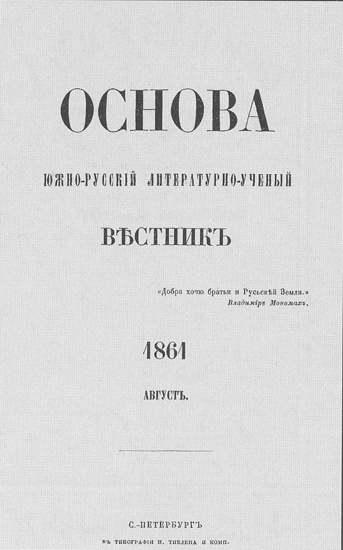
.jpg)
.jpg)
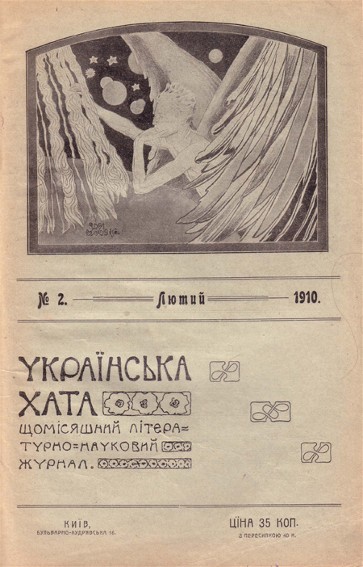
.jpg)
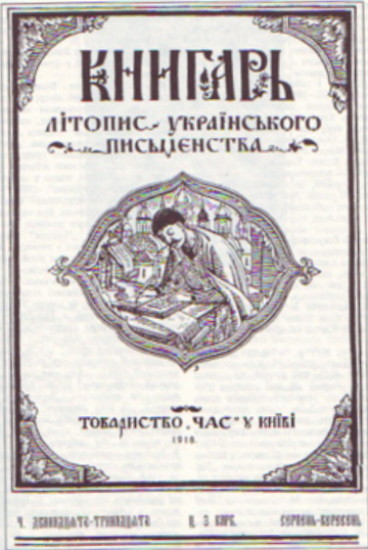
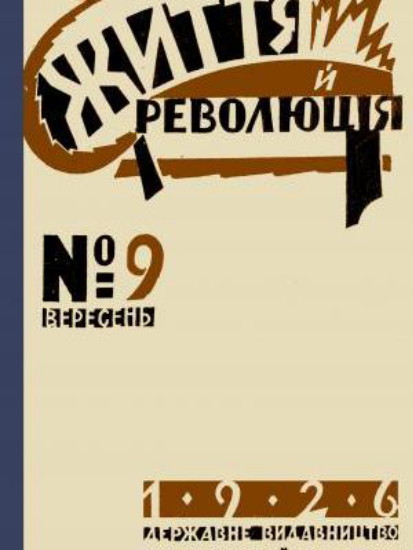
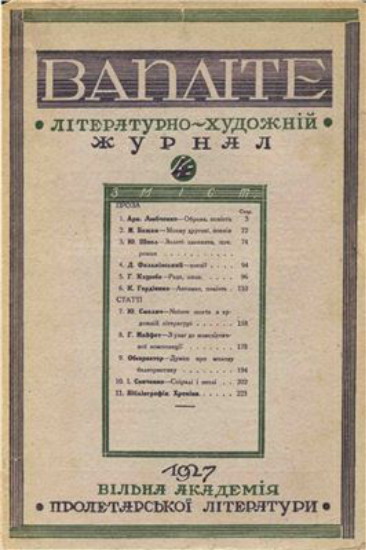
.jpg)
